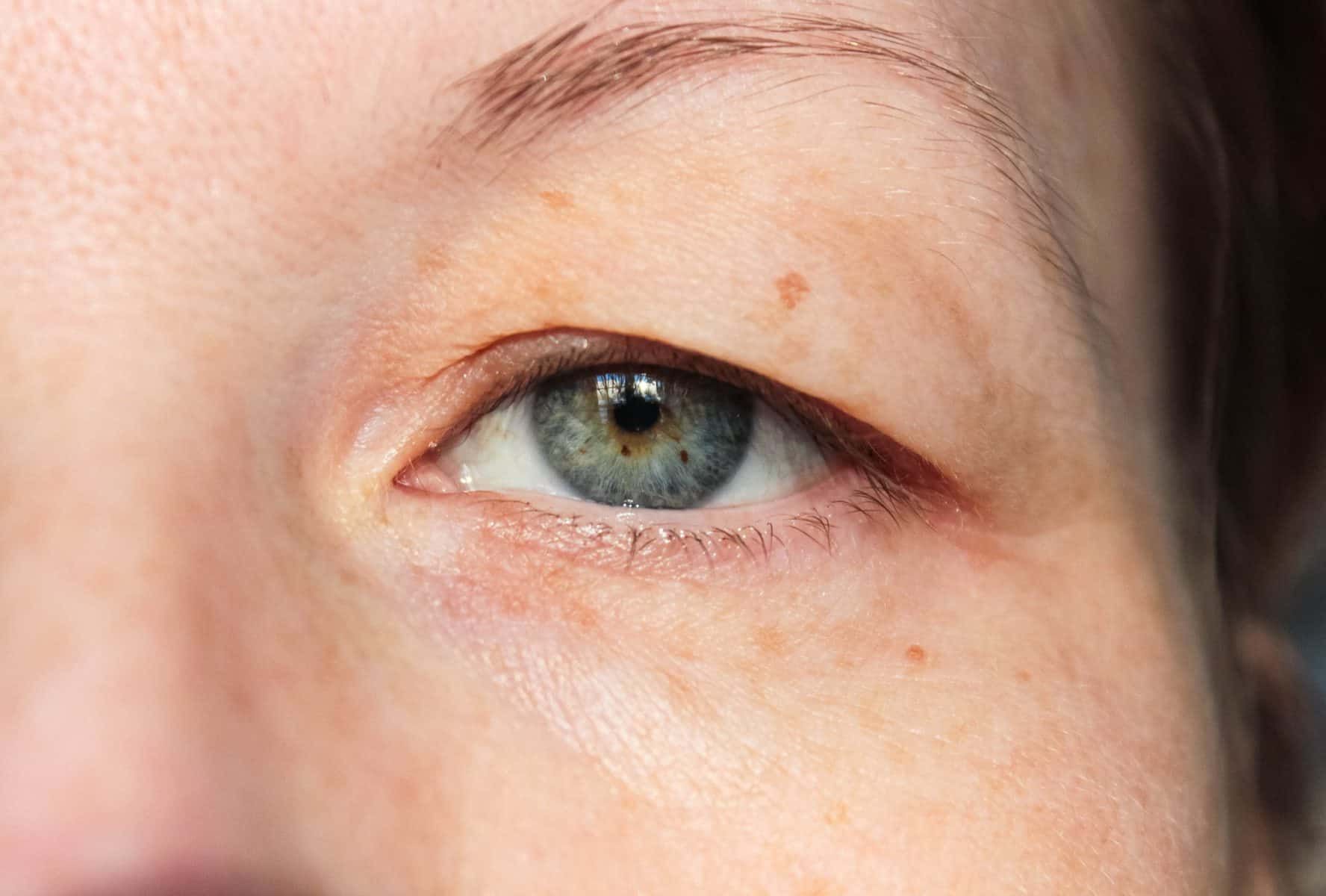Drooping Eyes – Causes, Symptoms and Treatment – Auckland NZ
Drooping eyes is the appearance of heavy upper eyelids, and develops over time as we age, or sometimes as a result of a medical condition. Regardless of the cause, it can affect vision and create a facial aesthetic associated with tiredness and ageing that many people seek treatment for.
Our cosmetic doctors and nurses offer safe, effective injectable treatments that remedy the majority of issues, or for more severe cases we also conduct drooping eyes surgery.
Below we discuss drooping eyes causes, drooping eyes symptoms, drooping eyes treatment, and drooping eyes surgery.

- Aesthetic Concerns
- Ageing
- Frown Lines
- Bags Under Eyes
- Drooping Eyes
- Crow’s Feet
- Sagging Face
- Loss of Facial Definition
- Thinning Lips
- Upper Lip Lines
- Bulging Arm Veins
- Skin
- Skin Pigmentation
- Rosacea / Facial Redness
- Acne Scarring
- Moles and Skin Tags
- Dull Skin
- Sweat
- Excessive Sweating
- Fat Pockets
- Abdomen
- Thighs
- Ankles
- Arms
Drooping Eyes Causes
Drooping eyes – otherwise known as ptosis – can occur due to the natural process of ageing, but it can also be caused by a number of medical conditions. It affects men and women equally and doesn’t have a preference for ethnicity.
When the cause is ageing, the mechanism is that the levator muscle (whose job it is to hold the upper eyelid up) becomes lax and stretches with time resulting in a heavy eyelid. This is the most common cause that we see at Palm Clinic in Auckland, NZ.
When, due to a medical cause, the medical condition can affect the nerves responsible for powering the levator muscle, for example due to a stroke or a neurological disorder such as ocular myasthenia gravis.
Lastly, drooping eyes (droopy eyelid) can be due to a previous trauma, such as a brain injury or a complication of cataract surgery.
Drooping Eyes Symptoms
The symptoms associated with eyelid droop can be incredibly varied. In its early stages, ptosis may be little more than a concerning aesthetic issue, whereas if left untreated this can develop into a greater and more inhibiting concern such as impaired vision.
Some people may experience dry or watery eyes. In severe cases, droopy eyelids can mean the head must be tilted back simply to see, walk around or hold a conversation. The unnecessary effort combined with the repetitive strain of neck movement can cause serious discomfort for many.
From an aesthetic point of view, droopy eyes can cause concern about physical appearance. As the eyelids begin to droop, they can create a dark, sagging appearance in the upper part of the face, and further exacerbate bags of the lower eyelids as well. Combined, these issues can lead to a feeling of looking old or tired.
At Palm Clinic in Auckland, NZ, our Doctors screen clients for medical causes for drooping eyelids. If indicated, clients are referred on to the appropriate specialist. When drooping eyes are due to ageing, the below treatment options will be discussed with you.
Drooping Eyes Treatment
Addressing droopy eyes can both improve vision and provide an incredible confidence boost. Whether for cosmetic reasons or functional concerns, people describe treatment as helping them:
- To look and feel better
- Improve vision problems
- Improve dry eyes
- Improve self-esteem and confidence
At Palm Clinic, Auckland, NZ we discuss treatment options openly with our clients. We’ve heard every concern there is around growing older and we strive to break down the stigma around cosmetic treatments.
Surgical and Non-Surgical Treatments
Often our clients prefer a non-surgical, subtle improvement to their droopy eyes. This can often be achieved with the use of Botox® and Dermal Fillers.
Botox® relaxes the muscles that pull down on the eyebrows and eyelids allowing the levator muscle to act unopposed. Dermal Fillers are injected beneath the skin to support the brow, lifting the brow and lids up.
For cases of severe ptosis, Blepharoplasty (ptosis surgery) is a common, minimally invasive surgery to remove excess or saggy eyelid skin and the underlying tissue, creating a more youthful, open-eyed result.
If you are interested in drooping eyes treatment, please call our reception team for more info, or book a consultation with one of our cosmetic medicine experts.

Mandatory Information
Botox® is a prescription medicine for the treatment of frown lines, horizontal forehead lines and crow’s feet round the eyes. Botox® has risks and benefits. Ask your doctor if Botox® is right for you. If you have side effects, see your doctor. You will need to pay for Botox® and clinic fees will apply. For details on precautions & side effects consult your healthcare professional or the Consumer Medicine Information (CMI) at www.medsafe.govt.nz. Botox® treatment lasts about 4 months and further courses of treatment may be necessary. Should only be administered by trained medical professionals.(Contains botulinum toxin A 50,100 & 200 units). Allergan (NZ) Limited, Auckland.
